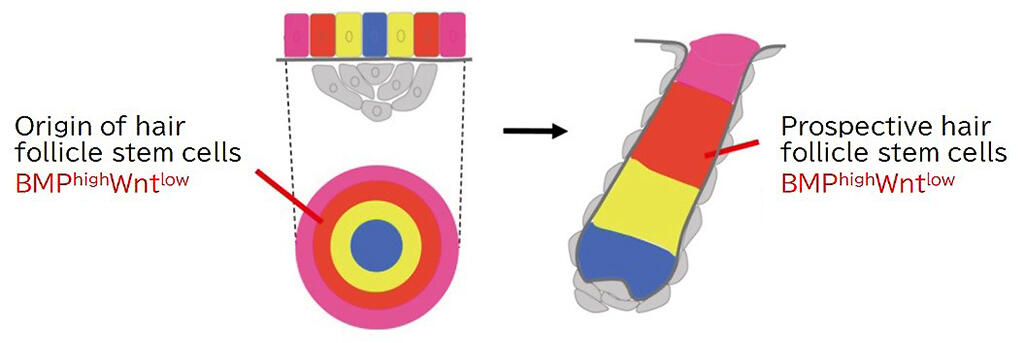Hair follicles, which are the organs that produce hair, cause hair to regrow after being cut, such as during haircuts and shaving. In animals, most organs are formed during embryonic development and cannot regenerate after birth. However, hair follicles produce hair throughout the life of an animal, periodically regressing and regenerating. Until now, it has not been fully understood how hair follicle stem cells are produced, although it was known that they supported hair follicle regeneration and hair production. A group of researchers from the RIKEN Center for Biosystems Dynamics Research - including Researcher Ritsuko Morita, Team Leader Hironobu Fujiwara, and others-have shown that hair follicle stem cells are induced from cells in a different location than previously thought.
The research group used a data-driven technique to demonstrate that developing hair follicles are divided into tubular compartments, that these compartments exist as concentric ring-shaped cell pre-patterns in pre-hair follicle epithelial tissue, and that future hair follicle stem cells are induced from one of these ring compartments. They named the process of hair follicle development the "telescope model," given that it involves a tubular compartment forming from a concentric ring-shaped cell pre-pattern and how closely this resembles the extension of a telescope. This telescope model is expected to be a mechanism common to the induction of stem cells and the development of organs on the body surface of various species. Further, the results of this study are expected to provide new fundamental knowledge about both stem cell biology and regenerative medicine.

Future hair follicle stem cells are derived from one of these ring compartments




